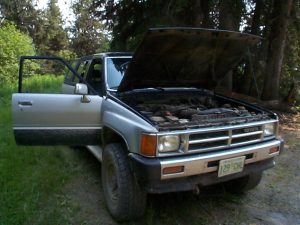 The hot summer months tend to put more strain on various components of your car than any other time of year. Many drivers think that winter is the worst time for cars, but the heat, dry temperatures, and often increased driving can all contribute to a higher number of summer breakdowns. Keep yourself safe on all of your summertime adventures by understanding what causes cars to break down in the summer and taking steps to avoid these issues.
The hot summer months tend to put more strain on various components of your car than any other time of year. Many drivers think that winter is the worst time for cars, but the heat, dry temperatures, and often increased driving can all contribute to a higher number of summer breakdowns. Keep yourself safe on all of your summertime adventures by understanding what causes cars to break down in the summer and taking steps to avoid these issues.
Overheating
When it’s hot outside, your engine is at higher risk for overheating. If the engine gets too hot, it could burn out critical components and cause damage beyond repair. There are several ways to protect against overheating. Start by checking the water level in the engine, but only do so when the engine is cool. While you’re checking fluids, top off the power steering fluid, oil, and washer fluid as well.
You’ll also get an indication of overheating when you look at the dashboard. The recommended temperature is in your manual, but you could notice a red warning light or that the needle is starting to rise. If the engine overheats, pull over immediately to allow it to cool down before continuing to drive.
Dirty Oil
Your engine relies on oil for lubrication and cooling. Over time, deposits from the engine can fall into the oil reservoir. Getting your oil changed regularly is one of the best ways to protect your car from overheating and damage. During an oil change, the technician will remove all the dirty oil from the engine. The next step is replacing the oil filter, which can help keep debris out of the oil lines and reservoir.
Finally, the technician will replace the oil to the recommended level, ensuring proper cooling and lubrication of the engine. Check your owner’s manual to find out how often the oil should be changed.
Tires
While a blown out tire doesn’t necessarily mean your car has broken down, experiencing this problem can put your car out of commission until you can get a new tire. The outdoor temperature has a significant impact on the tire pressure, and when the pressure gets too high, you’re more likely to have a blowout while you’re driving. Going over hot sections of road can also impact the safety of your tires. Keep a close eye on your tire pressure all summer long by checking it every time you get gas.
Consult your owner’s manual or the sticker on the inside of the driver-side door to make sure your tires stay at the right pressure for the hot temperatures. When you check the pressure, take a visual inspection of the tire condition as well. The tread should be at least 2 mm in thickness, although it’s better to be closer to 5 mm. Stick an upside-down penny between the tread sections for a simple safety test. If you can see President Lincoln’s hat, it’s time for new tires.
Stay safe on your summer road trips by making sure your car can handle the heat.





